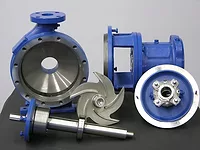The Importance of Preventive Maintenance
John Murray’s article, “Benchmarking: Hitting the Bull’s-Eye,” in the December issue, really hit home. John is 100% right about benchmarking and “getting on the continuous improvement bus or getting clobbered.” I have been part of many kaizen and 5S events. Some of these efforts were for paint lines, but many were for other departments, especially those that are my internal customers.
An issue that is important for me is preventive maintenance. I know that we all have some type of regimen that we may, or may not, stick to. But, is it extensive enough? I find that in most places it isn’t. There is a huge difference between job shops and companies that have paint lines dedicated to their own products.
Typically I have seen that job shops have a much better handle on their maintenance programs. Why? When making a living off a moving chain, every inch, minute and changeover time is critical. It may be the difference in making a buck or losing a buck. Businesses that have their own finishing systems for a final product (not all, but many) do not focus on that part of their business. Many times it is looked at as a process and they think, “We’ll fix it when it breaks.”
In today’s economy, we are not as likely to get capital to fix something or make it better. Many of us are being forced to look at things differently, and we’re being asked to save money. And assuming that everything is running fine can be a huge mistake. Coating systems are not self-sustaining.
Preventive maintenance is a planned activity, with people, tools and time scheduled on a regular basis.
Are the little things a part of your PM? The little things can be as simple as a daily check to see if your washer nozzles are pointed in the right direction. Are all of your chain trolleys rolling and free of hang-ups? Are sanitary trays clean? Do your powder guns get checked at least once a month for actual voltage at the gun tip?
If all of the “little things” are not being done, then you are assuming that everything is fine. That will cost you more somewhere down the line—like when you really need to be up and running.
I know that the idea of getting on a ladder and inspecting trolleys is about as exciting as watching paint dry, but sometimes it needs to be done. At some point, a lot of capital was spent to put that system in, and you need to take care of it.
Most of the maintenance that needs to be done is not the responsibility of your maintenance department; it’s the responsibility of the supervisor and the people who use the equipment. Who else is more intimate with the equipment than the operators? But I also would challenge any manager, vice president or owner to go down and ask about the PM program. It will give you an insight into how things are being done, if they are.
Need some ideas? Going back to John’s December article, he talked about finding out what other people are doing. When it comes to powder coating especially, there are no real secrets out there anymore. We’re all in this together, so we need to help each other out.
There are many groups in the finishing industry that hold monthly meetings. Sign up for one and get to know some people. Also, ask some of your current suppliers—paint, chemical or equipment—to set up a tour of another plant that they supply. You’ll find that most places will agree to a tour and that the worst that will happen is they’ll say “no.” Or, you may have to return the favor. PM programs for finishing systems can also be purchased.
One last point: When you have a system that is running well, and then you have a quality problem with a paint, powder, washer chemical or equipment, it’s much easier for everyone if you have your ducks in a row before you make that call.
Looking for a reprint of this article?
From high-res PDFs to custom plaques, order your copy today!






